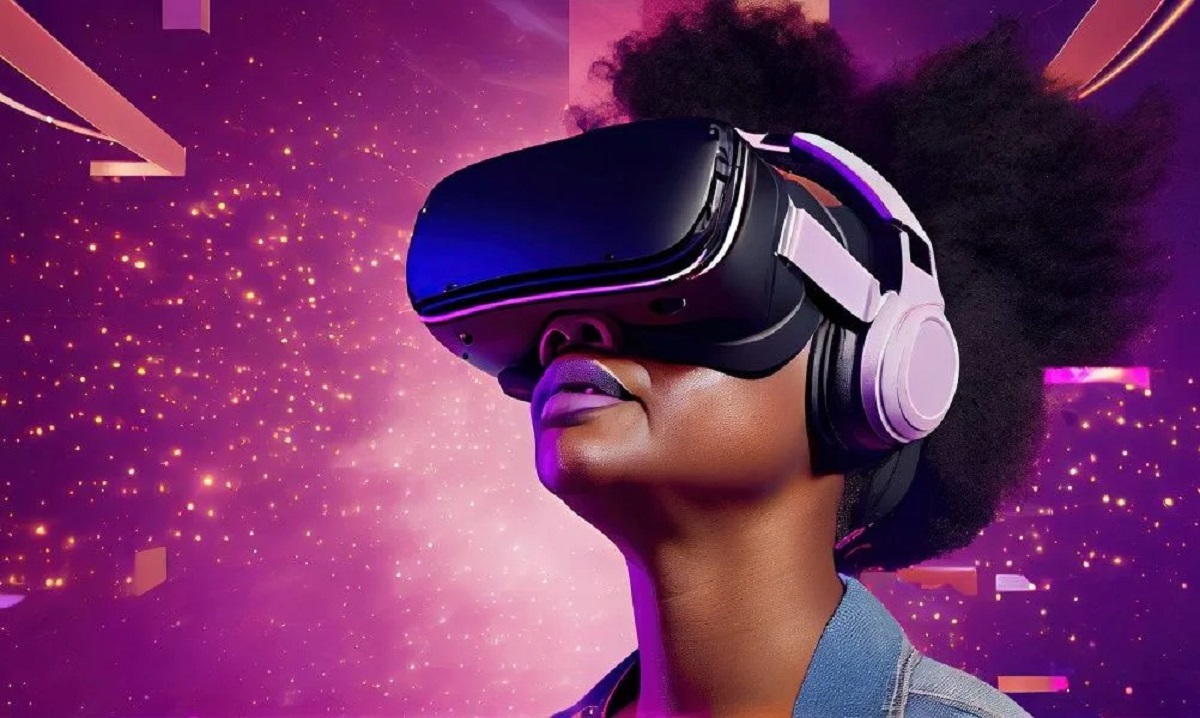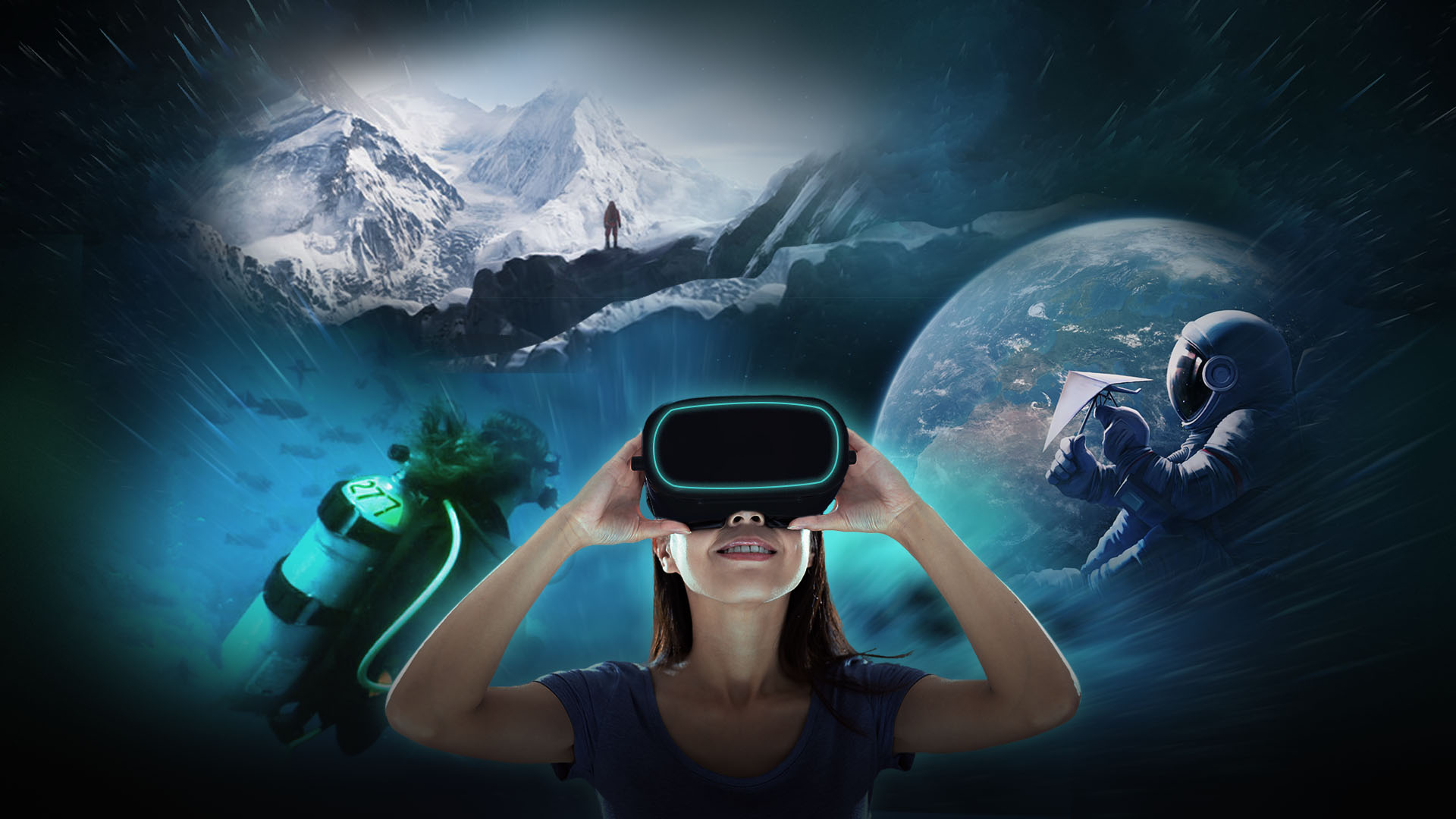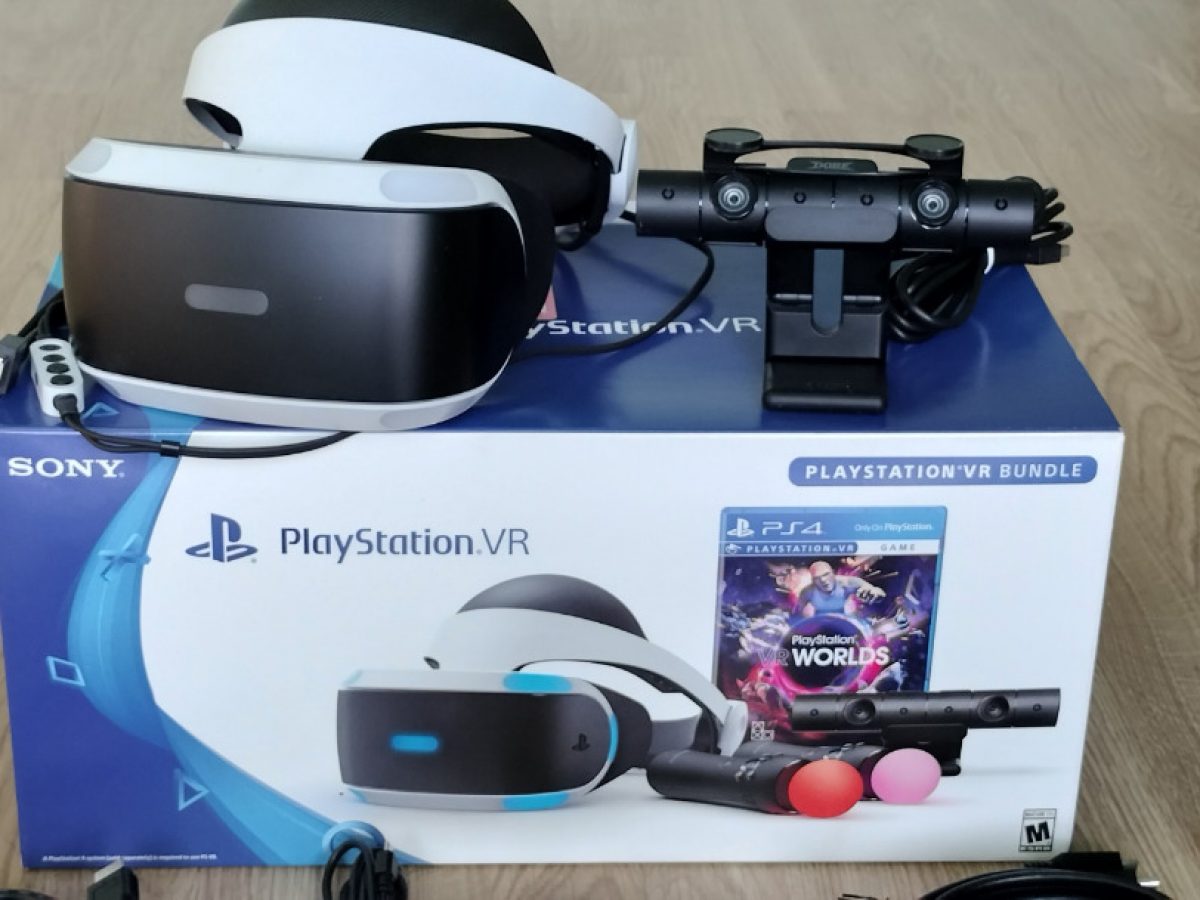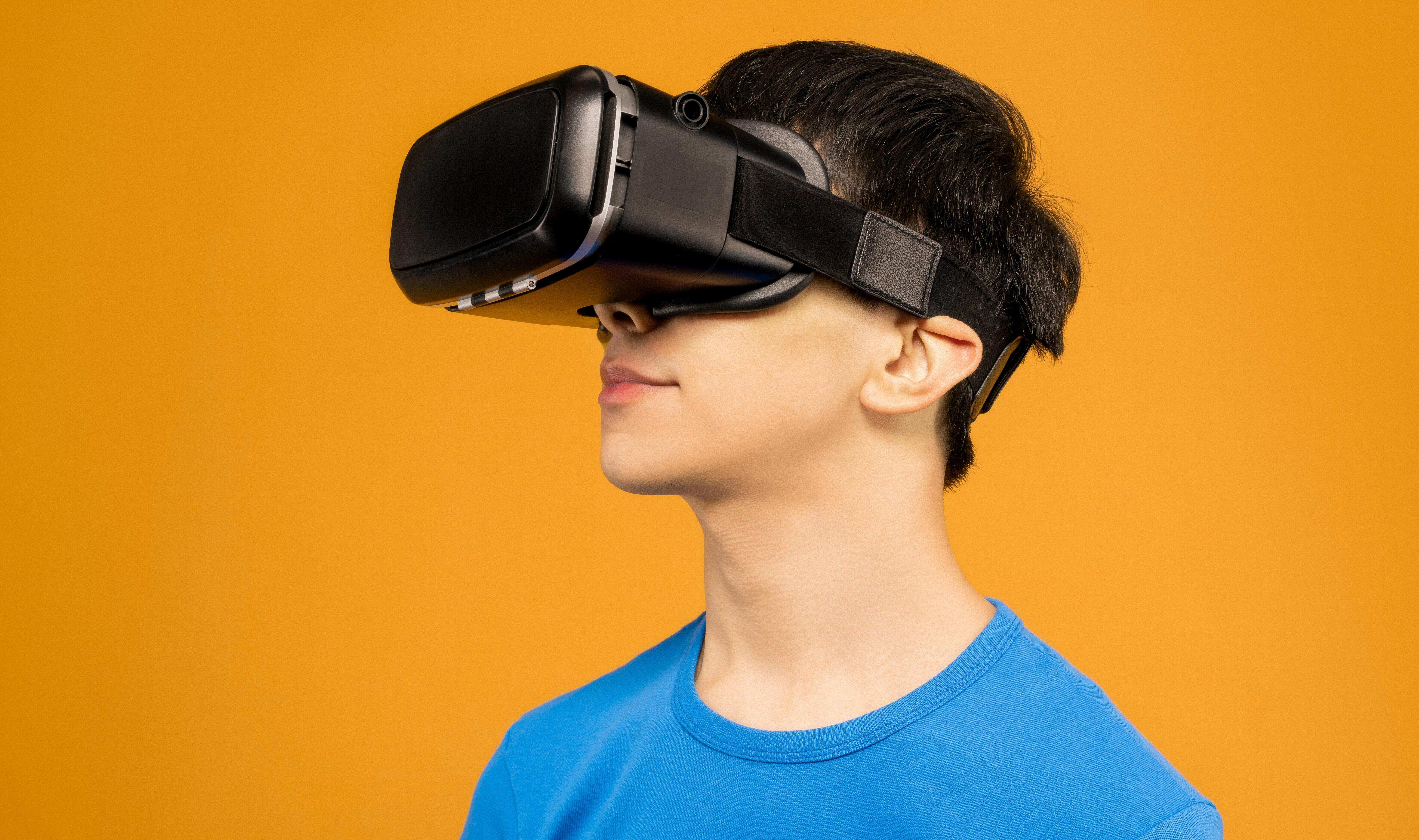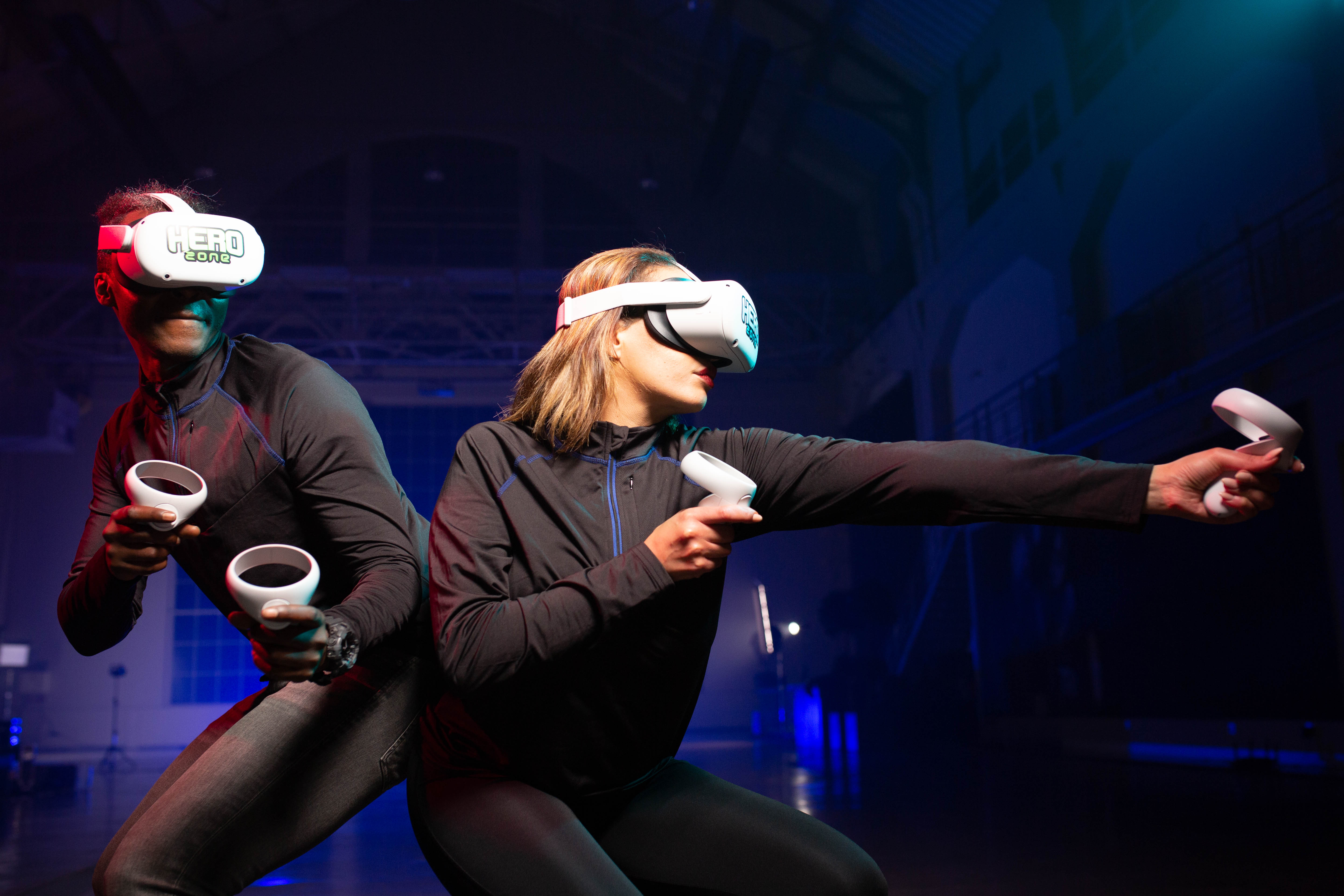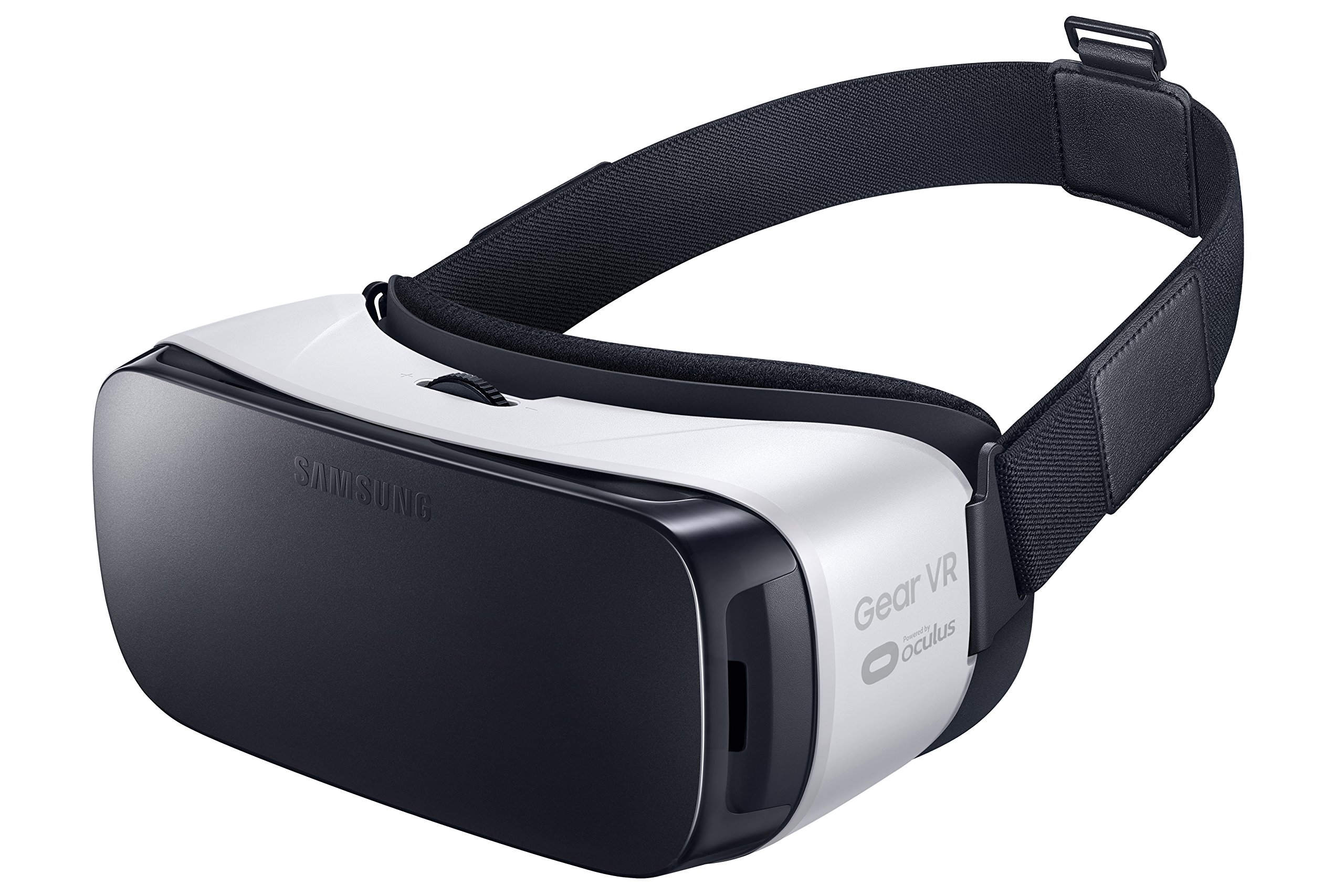Introduction
Virtual reality (VR) has revolutionized the way we perceive and interact with technology. It has transcended traditional boundaries, offering an immersive experience that transports users to captivating digital realms. With the advent of advanced VR headsets, individuals can now delve into a world of endless possibilities, whether it's exploring breathtaking landscapes, engaging in thrilling adventures, or immersing themselves in interactive simulations.
The evolution of VR technology has unlocked new dimensions of entertainment, education, and communication. As VR continues to gain momentum, it has become a ubiquitous presence in various industries, from gaming and entertainment to healthcare and education. The seamless integration of VR headsets has redefined the way we engage with digital content, blurring the lines between the physical and virtual realms.
In this article, we will delve into the realm of virtual reality and explore the myriad opportunities it presents for users. We will uncover the different types of VR headsets available, providing insights into their unique features and capabilities. Furthermore, we will delve into the art of using VR headsets for an immersive experience, offering tips and tricks to enhance the overall adventure. Whether you are a VR enthusiast or a newcomer to this captivating technology, this article aims to equip you with the knowledge and guidance to embark on an exhilarating virtual reality journey.
Join us as we embark on a captivating exploration of virtual reality, where the boundaries of imagination are limitless, and the digital landscape is yours to discover. Let's dive into the intricacies of VR headsets and unlock the potential for an immersive adventure that awaits within the realms of virtual reality.
What is Virtual Reality?
Virtual reality (VR) is a groundbreaking technology that simulates a realistic and immersive experience within a computer-generated environment. By leveraging a combination of hardware and software, VR enables users to interact with and navigate through artificial 3D environments, often in a highly interactive manner. This technology has the remarkable ability to transport individuals to virtual worlds, where they can engage with digital elements as if they were tangible physical objects.
At the core of VR lies the concept of presence, which refers to the sensation of being fully immersed in a simulated environment. This immersion is facilitated by VR headsets, which are equipped with high-resolution displays and motion tracking sensors. These components work in tandem to create a seamless and responsive experience, allowing users to look around, move, and interact within the virtual space.
The applications of VR extend across various domains, including entertainment, gaming, education, healthcare, and training. In the realm of entertainment, VR has redefined the gaming experience, offering players an unprecedented level of immersion and interactivity. Users can step into the shoes of a character and explore fantastical worlds, engage in heart-pounding adventures, and interact with virtual environments in ways that were previously unimaginable.
In the field of education, VR has emerged as a powerful tool for experiential learning. Students can embark on virtual field trips, explore historical landmarks, or dissect complex scientific concepts in a simulated laboratory environment. This hands-on approach to learning fosters deeper engagement and understanding, making education more captivating and impactful.
Moreover, VR has made significant strides in healthcare by enabling medical professionals to visualize complex anatomical structures, simulate surgical procedures, and develop innovative therapies. This technology has proven invaluable in training healthcare practitioners and enhancing patient care through immersive medical simulations.
The evolution of VR continues to break new ground, with advancements in haptic feedback, spatial audio, and social VR experiences further enhancing the sense of presence and realism. As VR technology continues to evolve, the boundaries between the physical and virtual worlds will continue to blur, opening up endless possibilities for creativity, exploration, and innovation.
In essence, virtual reality represents a paradigm shift in how we perceive and interact with digital content. It transcends the confines of traditional media, offering a gateway to immersive experiences that captivate the senses and ignite the imagination. As we delve deeper into the realm of virtual reality, we uncover a world where the boundaries of reality are redefined, and the canvas of imagination knows no bounds.
Types of Virtual Reality Headsets
Virtual reality headsets come in various forms, each offering unique features and capabilities that cater to diverse user preferences and technological requirements. These headsets are designed to deliver immersive experiences by seamlessly integrating visual and auditory stimuli, creating a compelling sense of presence within virtual environments. Understanding the different types of VR headsets is crucial for selecting the most suitable option based on individual needs and usage scenarios.
1. Tethered VR Headsets
Tethered VR headsets are connected to a computer or gaming console, leveraging the processing power of the connected device to deliver high-fidelity visuals and responsive experiences. These headsets often feature advanced motion tracking and room-scale capabilities, allowing users to move within a defined physical space while interacting with virtual content. Examples of tethered VR headsets include the Oculus Rift, HTC Vive, and PlayStation VR, each offering a rich library of immersive experiences and interactive applications.
2. Standalone VR Headsets
Standalone VR headsets, as the name suggests, operate independently without the need for external connections to a computer or console. These self-contained devices are equipped with built-in processing units, displays, and tracking sensors, offering a portable and convenient VR experience. Standalone headsets provide the flexibility to enjoy VR content without being tethered to a specific location, making them ideal for on-the-go usage. Notable examples of standalone VR headsets include the Oculus Quest and the HTC Vive Focus series.
3. Smartphone VR Headsets
Smartphone VR headsets leverage the computational and display capabilities of smartphones to deliver VR experiences. These headsets typically consist of a housing unit where a smartphone is inserted, serving as the display and processing unit for VR applications. While smartphone VR headsets offer a cost-effective entry point into virtual reality, the overall experience may be limited by the processing power and display quality of the paired smartphone. Popular smartphone VR headsets include Google Cardboard, Samsung Gear VR, and Google Daydream View.
4. Mixed Reality Headsets
Mixed reality (MR) headsets, also known as augmented reality (AR) headsets, blend virtual elements with the user's physical environment, creating a seamless integration of digital and real-world experiences. These headsets feature built-in cameras and sensors that enable spatial mapping and object recognition, allowing virtual content to interact with the surrounding environment. Mixed reality headsets, such as the Microsoft HoloLens and Magic Leap One, offer a spectrum of experiences ranging from immersive gaming to practical applications in design, engineering, and remote assistance.
By understanding the distinct characteristics of each VR headset category, users can make informed decisions when exploring the vast landscape of virtual reality. Whether seeking high-end gaming experiences, untethered mobility, or mixed reality applications, the diverse array of VR headsets caters to a spectrum of preferences and use cases, ensuring that the journey into virtual realms is as captivating as it is immersive.
Using Your Headset for an Immersive Experience
Once you have chosen the ideal VR headset that aligns with your preferences and requirements, the next step is to embark on a journey of immersive experiences. Whether you are delving into captivating virtual worlds, engaging in interactive simulations, or exploring educational content, maximizing the potential of your VR headset is essential for a truly captivating adventure.
1. Exploring Diverse Content
VR platforms offer an extensive array of content, ranging from immersive games and 360-degree videos to educational experiences and virtual tours. By exploring diverse content genres, users can unlock the full potential of their VR headsets, immersing themselves in captivating narratives, breathtaking environments, and interactive challenges. Whether it's embarking on a thrilling adventure, delving into historical reenactments, or engaging in creative experiences, the breadth of VR content ensures that there is something for every enthusiast.
2. Leveraging Interactive Features
Many VR experiences incorporate interactive elements that respond to user input and physical movements. Whether it's wielding virtual tools, solving puzzles, or engaging in virtual sports, the interactive nature of VR content adds a layer of immersion that transcends traditional media. By leveraging the interactive features of VR, users can actively engage with the virtual environment, fostering a sense of agency and presence that elevates the overall experience.
3. Customizing Settings for Optimal Comfort
Optimizing the settings of your VR headset is crucial for ensuring a comfortable and immersive experience. Adjusting factors such as interpupillary distance (IPD), display brightness, and audio settings can significantly enhance visual clarity and overall comfort during extended VR sessions. Additionally, familiarizing yourself with the headset's ergonomic features, such as head strap adjustments and ventilation, can contribute to a more immersive and enjoyable experience.
4. Embracing Social and Multiplayer Experiences
Many VR platforms offer social and multiplayer experiences that enable users to connect with friends, family, and fellow enthusiasts in virtual environments. Whether it's engaging in collaborative gameplay, attending virtual events, or exploring shared spaces, the social dimension of VR adds a compelling layer of interaction and camaraderie. Embracing social and multiplayer experiences can transform individual VR adventures into shared escapades, fostering a sense of community and connection within virtual realms.
5. Engaging with User-Generated Content
The thriving VR community continually generates user-created content, including custom environments, interactive experiences, and creative applications. Exploring user-generated content not only expands the scope of available experiences but also provides insight into the diverse talents and creativity within the VR community. By engaging with user-generated content, users can discover unique and innovative experiences that showcase the boundless potential of VR as a platform for creativity and expression.
By embracing these strategies and approaches, users can unlock the full potential of their VR headsets, transforming each session into a captivating and immersive adventure. Whether it's exploring new content, leveraging interactive features, or connecting with others in virtual spaces, the realm of virtual reality offers a wealth of opportunities for unforgettable experiences. As users continue to immerse themselves in the boundless landscapes of VR, the journey becomes a testament to the limitless potential of technology to inspire, entertain, and captivate the senses.
Tips for a Better Virtual Reality Adventure
Embarking on a virtual reality adventure opens the door to a realm of endless possibilities, where captivating experiences and immersive environments await. To ensure that every journey into virtual realms is as captivating and seamless as possible, it is essential to embrace a set of tips and best practices that enhance the overall VR experience. Whether you are a seasoned VR enthusiast or a newcomer to this captivating technology, the following tips are designed to elevate your virtual reality adventures to new heights.
1. Optimize Your Play Area
Creating a dedicated play space for VR experiences can significantly enhance safety and enjoyment. Clearing the area of obstacles and ensuring adequate room for movement allows for unrestricted exploration within virtual environments. Additionally, marking boundaries and ensuring sufficient lighting can further contribute to a safe and immersive VR adventure.
2. Take Breaks and Stay Hydrated
Extended VR sessions can be physically and mentally engaging, making it important to take regular breaks to rest and rehydrate. Pacing VR sessions and incorporating short breaks can help prevent discomfort and fatigue, ensuring a more enjoyable and sustainable experience.
3. Calibrate Your Headset
Calibrating your VR headset, including adjusting the interpupillary distance (IPD) and ensuring a snug and comfortable fit, is essential for optimizing visual clarity and comfort. Taking the time to properly adjust the headset before each session can significantly enhance the overall immersive experience.
4. Explore Diverse Content Genres
Venturing into diverse content genres, including games, educational experiences, artistic creations, and 360-degree videos, broadens the scope of virtual reality adventures. Embracing a variety of content genres allows for a rich and varied exploration of virtual environments, catering to diverse interests and preferences.
5. Engage in Physical Movement
Many VR experiences incorporate physical movement and interaction, offering a dynamic and engaging adventure. Embracing physical movement within virtual environments not only enhances immersion but also contributes to a more active and enjoyable VR experience.
6. Customize Settings for Comfort
Adjusting display brightness, audio levels, and other settings based on personal preferences can significantly enhance comfort and visual clarity during VR sessions. Customizing settings to suit individual comfort levels ensures a more personalized and enjoyable adventure.
7. Embrace Social and Multiplayer Experiences
Connecting with friends and fellow enthusiasts in virtual spaces adds a social dimension to VR adventures. Engaging in multiplayer experiences and shared activities fosters a sense of community and camaraderie within virtual realms, transforming individual adventures into shared escapades.
8. Stay Mindful of Motion Sickness
For individuals susceptible to motion sickness in VR, taking proactive measures such as gradually acclimating to VR experiences and adjusting movement settings can help mitigate discomfort. Being mindful of motion sickness and implementing strategies to address it can contribute to a more comfortable and enjoyable virtual reality adventure.
By incorporating these tips into your virtual reality adventures, you can elevate the overall experience, ensuring that each session is immersive, enjoyable, and tailored to your preferences. As the boundaries of virtual realms continue to expand, these tips serve as a compass for navigating the captivating landscapes of virtual reality, unlocking the full potential of this transformative technology.
Conclusion
In conclusion, the realm of virtual reality stands as a testament to the boundless potential of technology to immerse, inspire, and redefine the way we engage with digital content. As we navigate through the captivating landscapes of VR, we are propelled into a world where imagination knows no bounds, and the boundaries of reality are redefined. The evolution of VR technology has transcended conventional paradigms, offering an immersive gateway to experiences that captivate the senses and ignite the spirit of exploration.
The diverse array of VR headsets, ranging from tethered and standalone devices to smartphone and mixed reality headsets, underscores the versatility and adaptability of virtual reality technology. Each category of VR headsets caters to distinct preferences and usage scenarios, ensuring that users can embark on immersive adventures tailored to their individual needs.
Moreover, the potential for an immersive VR experience is further amplified through the exploration of diverse content genres, interactive features, and user-generated content. Whether it's delving into captivating games, embarking on educational journeys, or connecting with others in virtual spaces, the breadth of VR content offers a rich tapestry of experiences that cater to a spectrum of interests and passions.
As users navigate the intricacies of VR, embracing best practices and tips for optimizing the VR adventure enhances the overall experience, ensuring comfort, safety, and enjoyment throughout each session. From calibrating VR headsets to exploring diverse content genres and embracing physical movement within virtual environments, these strategies contribute to a more engaging and sustainable VR experience.
The journey into virtual realms is not merely a technological escapade but a testament to the human capacity for creativity, innovation, and connection. It transcends the confines of traditional media, offering a gateway to immersive experiences that foster a sense of wonder and discovery. As we continue to unravel the possibilities within virtual reality, we are reminded of the profound impact of technology in shaping our perceptions, interactions, and aspirations.
In essence, virtual reality represents a transformative canvas where the realms of imagination and technology converge, inviting us to embark on adventures that transcend the limitations of the physical world. The immersive potential of VR technology serves as a beacon of innovation, inspiring us to explore, create, and connect within the captivating landscapes of virtual reality. As the journey into virtual realms unfolds, it becomes a testament to the enduring allure of immersive experiences and the indomitable spirit of human curiosity.







